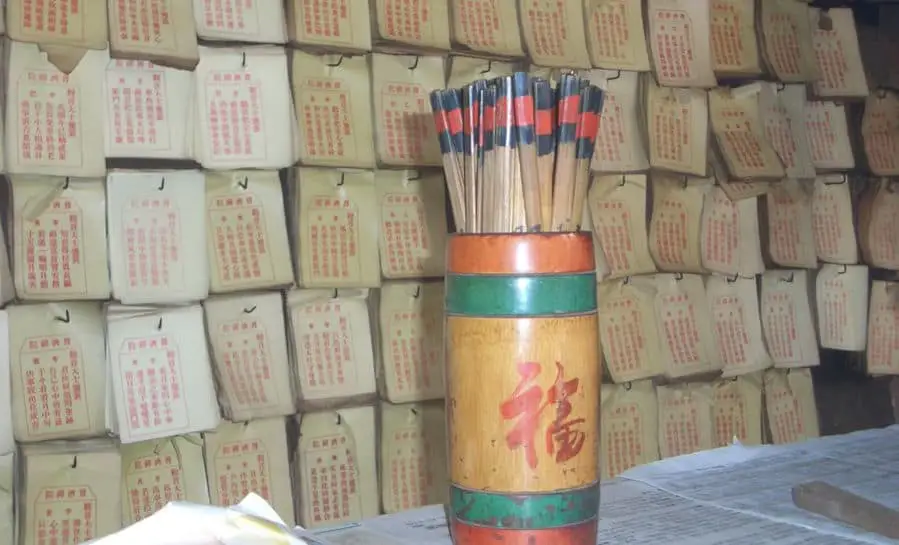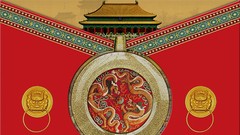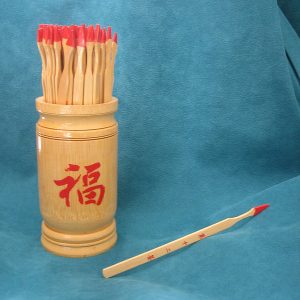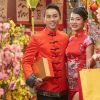
The Chinese are known for their mysticism and their ability to tell the future in a variety of ways, using different materials that hold some semblance of importance for them.
One of these ways involves the use of what is called Chinese fortune sticks. This ancient eastern fortune-telling method is usually seen as a chance game or even surrender to one’s fate. When played, one will be able to open up the doors to one’s future. (More details in our article: Chinese Fortune Sticks: History, Meaning, and How They Are Used)
The Chinese used these fortune sticks for many centuries, using them to calm troubled souls by seeking advice regarding many difficult situations. It is said that the Chinese fortune sticks are used in order to contact the Chinese gods and goddesses since the sticks are divine.
Now, you can also use this in modern times, whether you are indeed a full-pledged truth seeker or simply someone who wants to dabble in the ancient and Asian art of consulting with the spirit world.
The Chinese fortune sticks work in such a way by first asking a question to heaven. After thinking of your question, you will then get the sixty-four pieces of sticks. Take note that each of these sticks is individually numbered and are also placed in a highly sacred container that is marked with the discreet Chinese character that is used to symbolize spiritual blessings.
To start, you shake the cup until one of the sticks falls out from it. The stick that falls out will have a number that corresponds to a highly thought-provoking poem with meaning or fortune. This then may be used to solve the problem of the troubled person.
It is said that this Chinese fortune stick fortune-telling method is also a way of heeding the message of the gods, who are ready and willing to provide guidance and assistance to the world through the use of these sticks.
The great thing about these Chinese fortune sticks is that we can still be able to use this ancient method even in our modern world. Now, western audiences may have a chance to see what is in store for them by using the Asian way.
There are many Chinese fortune sticks available on the market today, and all come in very stylish packages that have sixty-four pieces of bamboo divination sticks, a wooden shaker that is used for good luck, and even a nicely illustrated guidebook that has the divinatory poems one can consult to when a stick falls out.
Each of the divination poems in the modern package of the Chinese fortune sticks comes from the original five sets of the ancient text. As ancient as it may sound, it is nonetheless highly applicable to the modern world and will truly spark the interests of both spiritualists as well as new-age enthusiasts too. One can truly say that we can still see the method of the ancients applied and used in such modern times as ours.
Online Courses about Chinese Culture from Udemy (Aff.link)

History of Chinese Fortune Telling

The art of Asian fortune-telling truly traces its roots to the Chinese. The art of Chinese fortune-telling is also known as Suan ming and has definitely been used in a multitude of ways – all related to divination – throughout the great and many Chinese dynastic periods.
Here exist four major methods that have emerged out of centuries of dabbling in mysticism and are still unsurprisingly being practiced in areas such as China, Taiwan, and Hong Kong.
They are still used because of their ability to be very accurate and are then quite popular with the people, of course. Chinese fortune-telling is so popular that they have also undeniably influenced the fortune-telling practices of both Korea and Japan and have gained a place in the culture of these two Asian neighbors under different names.
To illustrate, the Saju method of fortune-telling in Korea is also the same as China’s very own four-pillar method of fortune-telling.
It has several popular methods, one being face reading. In face reading, one is then able to interpret the facial features by way of the nose, mouth, and eyes as well as other distinct features that can be found on one’s face which can be used in order to predict the future.
The features are those which usually cover the phases of the client’s life too, therefore, revealing what exactly the type of fortune is associated with the particular age range of the person. One may also then use a position map to trace the different points of one’s face.
This will indicate the regions where luck is abundant in particular ages. The upper region of one’s face may be used to represent youth. The middle part may then be used to represent middle age and the face’s lower region may also represent old age.
Palm reading is yet another type of Chinese fortune-telling. Here, an expert called a palmist determines the fortune of the different aspects of your life by analyzing the position of lines that can be found on the client’s palm. Each palm line is represented by different facets of life such as love, personality, career, wealth, and other traits.
Kau Cim, yet another method of fortune-telling, is performed by shaking a bamboo cylinder until one incense stick jumps out of the cylinder. The cylinder is then picked up and inspected and analyzed by an interpreter who reads and makes out the meaning of the Chinese characters found on the markings.
The prediction of Kau Cim may be a bit short-range because it only covers the period of one Chinese calendar year. This method is also a very popular one with westerners, who have renamed such a method the Chi-Chi Sticks.
Chinese society dictates that fortune-telling be a well-respected and equivocal part of both social and business circles as well. It is because of this reason that many fortune tellers are highly sought after to make decisions that would impact one’s business or life decisions – very much like the management consultants of our times.
Related reading: Ancient Chinese fortune telling Methods that Still Exist – Opens in new tab.
♦ If you liked this article, join our newsletter by using the forms on this website so we can stay in touch.
Featured Image By Wikimedia Commons




